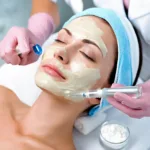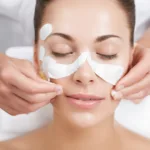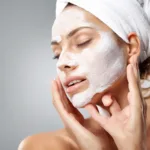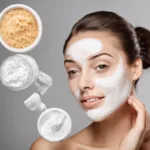10 January 2024
Discover the benefits, ingredients, and best practices for using exfoliating peel pads to achieve a brighter, smoother, and more even complexion.
In the quest for radiant and youthful-looking skin, many individuals turn to exfoliating peel pads as a convenient and effective solution. These pads, soaked in powerful exfoliating and brightening ingredients, offer a multitude of benefits, including the reduction of dark spots, clearing of clogged pores, and the softening of fine lines. With their ease of use and ability to address multiple skin concerns, exfoliating peel pads have become a skincare unicorn in the realm of multitasking products.
Resurfacing Ingredients
Exfoliating peel pads contain a variety of resurfacing ingredients, with alpha-hydroxy acids (AHAs) and beta-hydroxy acids (BHAs) being the most common. AHAs, such as glycolic and lactic acids, work to remove dead skin cells from the surface of the skin, resulting in a brighter and smoother complexion. BHAs, like salicylic acid, penetrate deep into the pores, unclogging them and clarifying the skin. Other ingredients, such as polyhydroxy acids (PHAs) and fruit enzymes, offer gentler exfoliation options for those with sensitive skin. Azelaic acid and retinoids are also commonly found in peel pads, providing additional benefits such as reducing inflammation and promoting collagen production.
Your Skin Concerns + Sensitivity
When choosing an exfoliating peel pad, it’s important to consider your specific skin concerns and sensitivity levels. Glycolic acid is a versatile option that works well for most skin types, addressing issues such as acne, scarring, sun damage, and hyperpigmentation. Lactic acid and PHAs are gentler alternatives suitable for sensitive skin. Salicylic acid is ideal for oily and acne-prone skin, while fruit enzymes offer a gentle exfoliation option. Azelaic acid is effective for reducing redness and inflammation, making it suitable for those with rosacea. Retinoids provide deeper exfoliation and anti-aging benefits.
Strength
The strength of an exfoliating peel pad is determined by the concentration of active ingredients. Some pads explicitly state the percentage of active ingredients, while others can be inferred from the ingredient list. Higher concentrations of glycolic acid, for example, result in a more potent peel. It is essential to introduce peel pads gradually into your skincare routine to allow your skin to adjust. Starting with once or twice a week usage and gradually increasing frequency is recommended. It is also important to moisturize and protect your skin with sunscreen after using peel pads to reduce irritation and sensitivity.
Reducing Irritation
While chemical peel pads can provide numerous benefits, they can also cause skin irritation if not used correctly. Over-exfoliation can lead to tender, inflamed skin. To minimize irritation, use milkier cleansers instead of gel formulas, and follow with a hyaluronic acid serum and a moisturizer rich in fatty acids and ceramides. Additionally, always apply a physical sunscreen to protect the skin from UV damage.
Conclusion:
Exfoliating peel pads offer a convenient and effective solution for achieving a brighter, smoother, and more even complexion. By understanding the resurfacing ingredients, considering your specific skin concerns and sensitivity levels, and using peel pads with the appropriate strength, you can reap the benefits of these multitasking skincare products. Remember to introduce peel pads gradually and take steps to reduce irritation for optimal results. With consistent use, you can achieve radiant and youthful-looking skin that will leave you feeling confident and beautiful.



